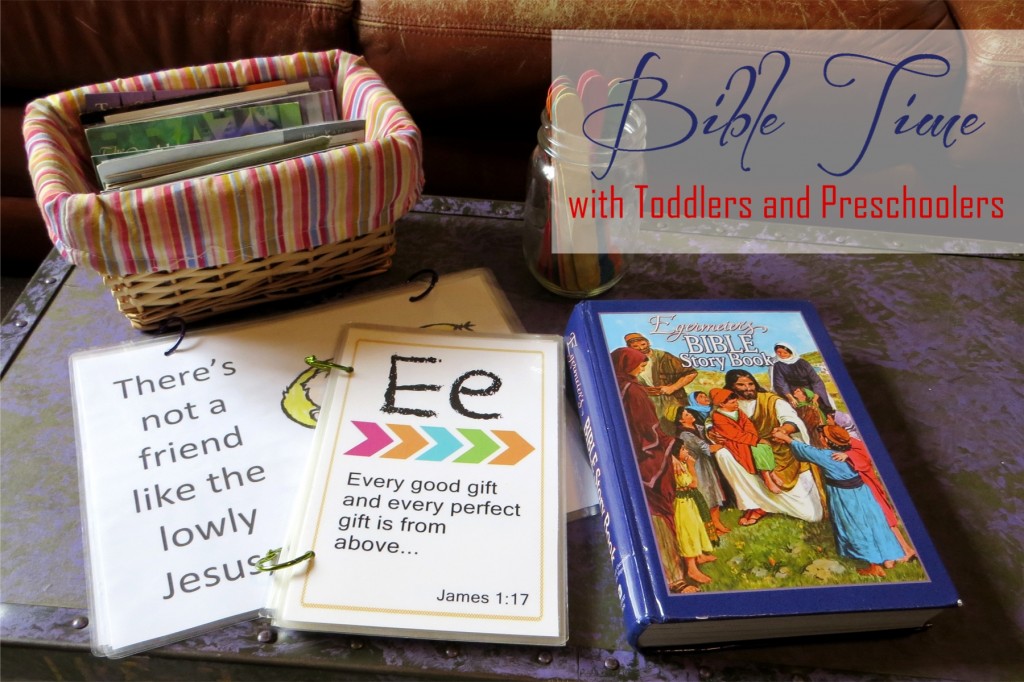
The Lord has impressed upon me the need to be pouring Scripture into my children while they are young. One tool that I have used to accomplish this is a daily Bible Time. I struggled at first to know what to do with my young children since they don’t understand a lot of Bible terms, and they get the “wiggles” pretty quickly. Through suggestions of godly older ladies, and some trial & error, I have put together three elements to make Bible Time fun and successful.
I have four children ages four and under, so our Bible Time isn’t always daily, though that is the goal. And it usually isn’t at the same time every day, because we have to flex our schedule around the ever changing needs & schedules of twin babies. To accommodate this, I put my Bible Time items together in a basket near the couch so that it is always easily accessible whenever we have a few minutes to sit down together to read, sing, and pray.
Just as in a corporate worship service, I believe that the key ingredients of devotions or Bible Time with our children are reading God’s Word, praising God through song, and bringing our requests to God through prayer.
Reading God’s Word
Be careful in selecting a children’s Bible. Many have quite diluted the Word of God. Others have introduced many inaccuracies or changed God’s Word in order to make it “child friendly.” The Egermeier's Bible Story Book was suggested to me, and we love it! It goes through the Bible in order, but divides the stories/chapters into kid-friendly portions. Though written in story form, it follows the Scripture carefully and closely. And the pictures are very beautiful!
was suggested to me, and we love it! It goes through the Bible in order, but divides the stories/chapters into kid-friendly portions. Though written in story form, it follows the Scripture carefully and closely. And the pictures are very beautiful!
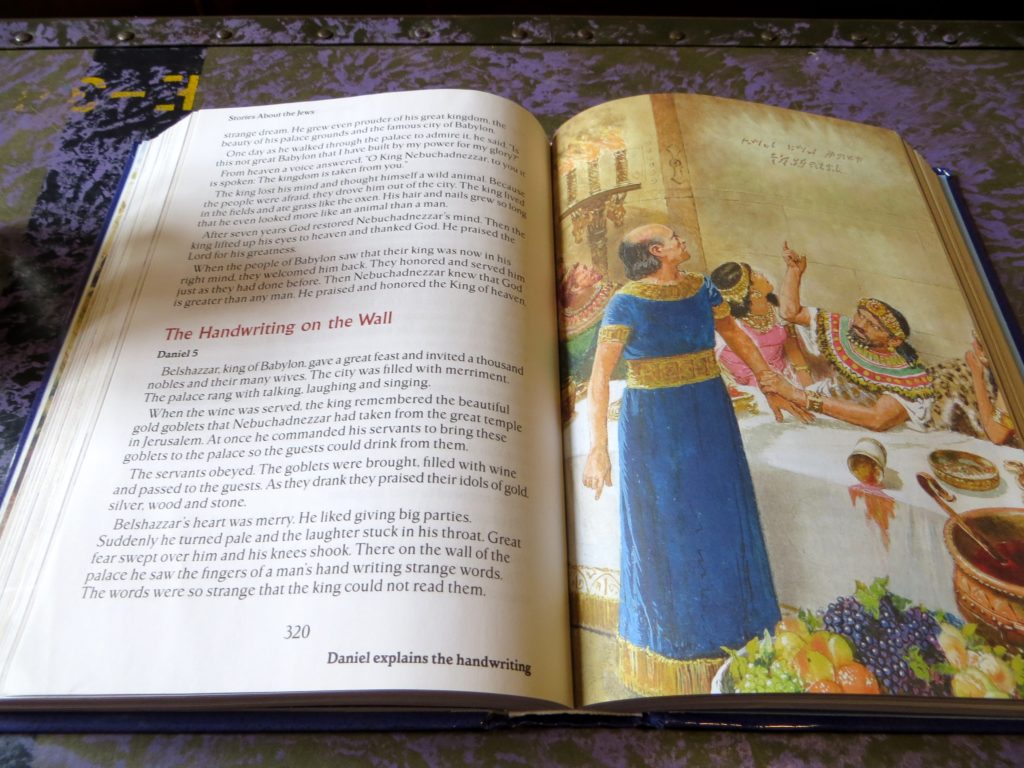
Right now we are reading through it in order from Genesis, but we have also picked stories to correlate with a “letter of the week”. (Lazarus, Lot, and Salt & Light for the letter L are some examples). I read one section to the children. Often they are riveted and ask me to continue reading, but sometimes they are squirmy and so we end with just one story.
Singing
My children love to sing! And though they have favorite songs, they are eager to learn new ones also. I have been trying to introduce them to a couple of new songs per month. I often visualize the songs by printing the lyrics and adding clipart in Microsoft Word. Sometimes I print out the words and we color the pictures together for a craft project. (I like to laminate them to make them more durable). Even though my kids can’t read yet, the pictures help them follow along as they learn the song. We also sprinkle in some songs that have hand motions, which is very helpful if they kids are squirmy.
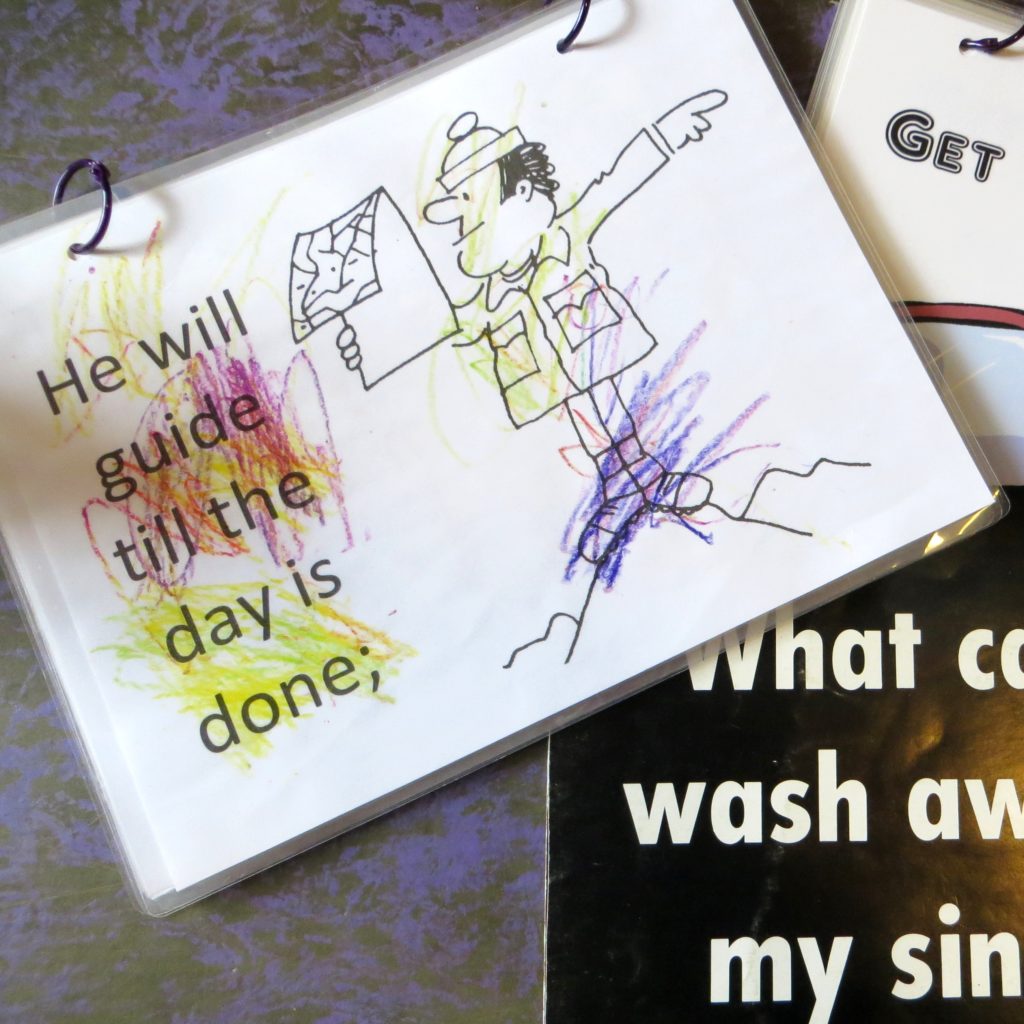
My kids get a good dose of children’s Bible songs at church. We sing their favorites and teach them new ones too. I also want them to learn the good old hymns, which are so rich in doctrine and Scripture. We take it slow when learning these new songs to be sure they understand. After we sing the song, I discuss the words and the meaning with them. Through this repetition they come to understand what the song means.
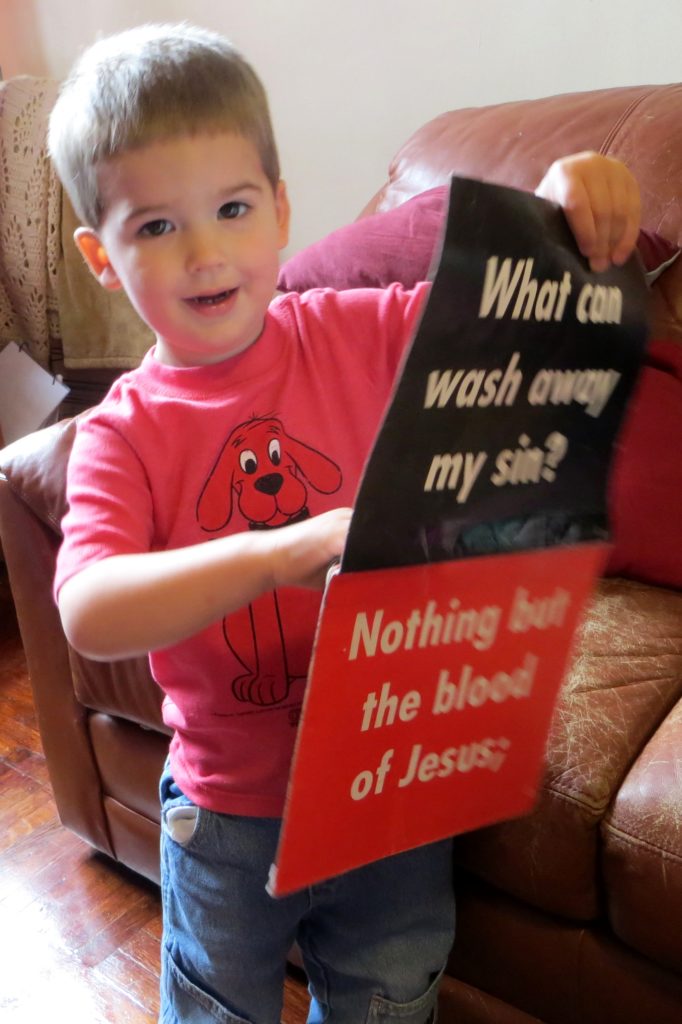
For example, Nolan loves to sing “Nothing but the Blood of Jesus.” Our visual folds out into the shape of a cross. After we sing I ask them questions like, “What shape is this?” “Why is it a cross?” “Why did Jesus have to die on the cross?” “What is the only way we can be clean from our sins?” “What is sin?”
Prayer
We have three different approaches to praying with our kids. We mix them up based on the time and their attention span that day. Sometimes I ask them to share one blessing and one prayer request, and then we pray for those things.
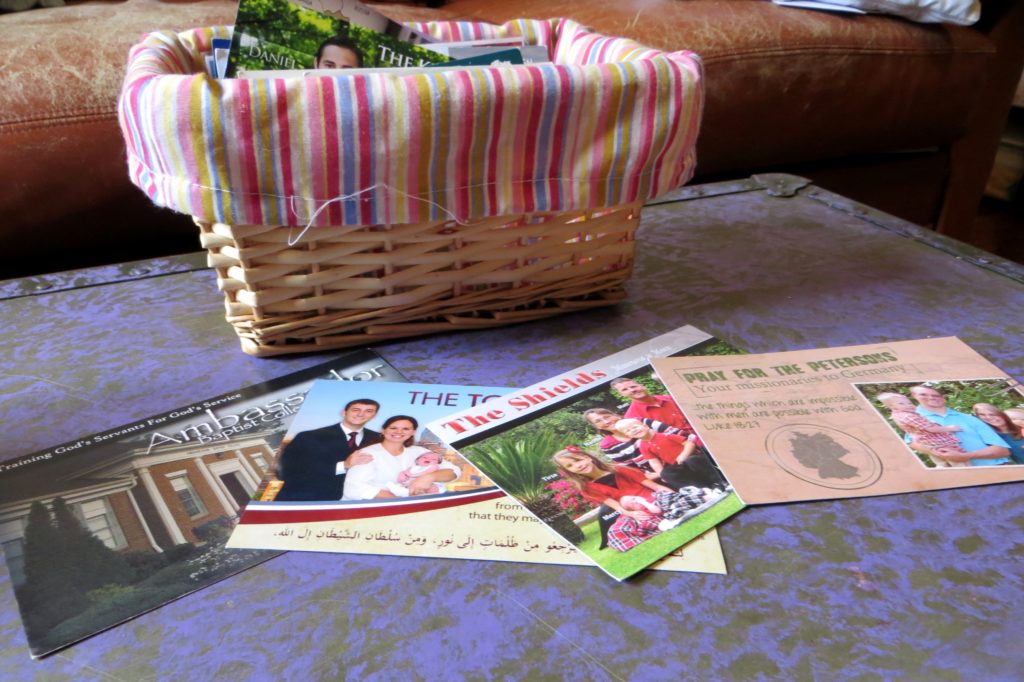
Another way to guide prayer time is to pray for missionaries. We have a basket of prayer cards, and my kids love to pick out a card and pray for that missionary. This teaches them to be concerned with the needs of people around the world. It also helps them put a face to people we are praying for regularly. When a missionary was badly burned in an accident, we showed the kids his picture to help them make associations as we prayed for his recovery. And they each have a favorite card they dig through the basket to find!
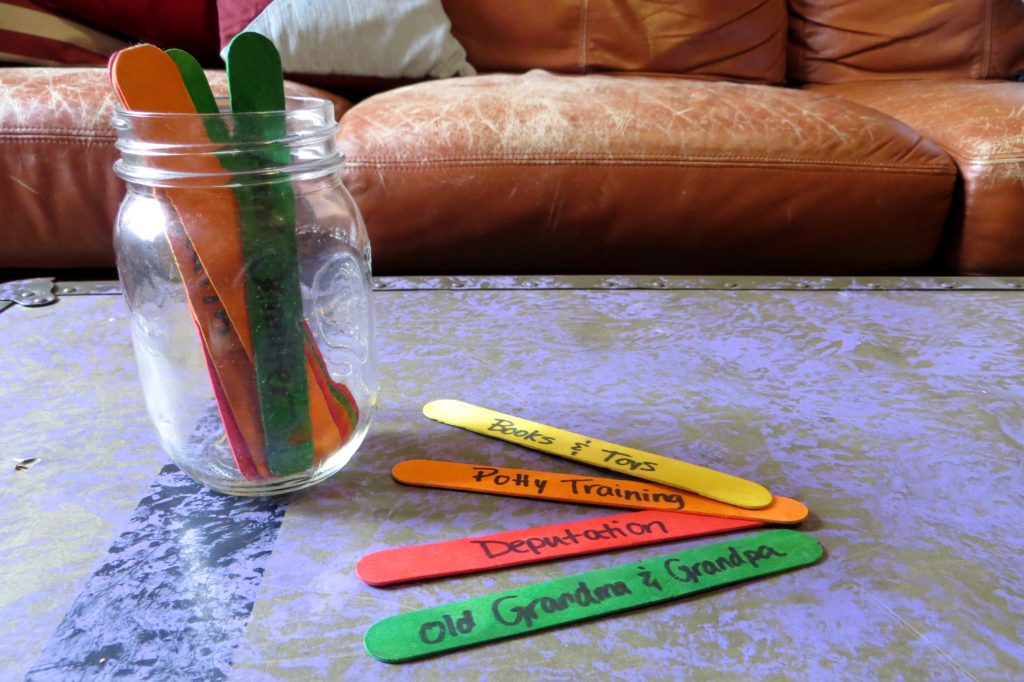
The last tool we use is a jar of “prayer sticks.” We wrote blessings and special people on popsicle sticks. We let the kids pick a couple of sticks out at prayer time, and that is the blessing/request for which they are to pray. Some examples are people with chronic illness, family members (we have all of our grandparents on sticks), and people in need of salvation. Some examples of blessing are friends, books & toys, health, etc.
Do you have a daily Bible Time with your children? So often they are a thirsty sponge, absorbing everything they encounter. It’s important, and a great opportunity, to “fill them up” with the things of God! What have you found to be the best way to have a devotional time with young children?

















